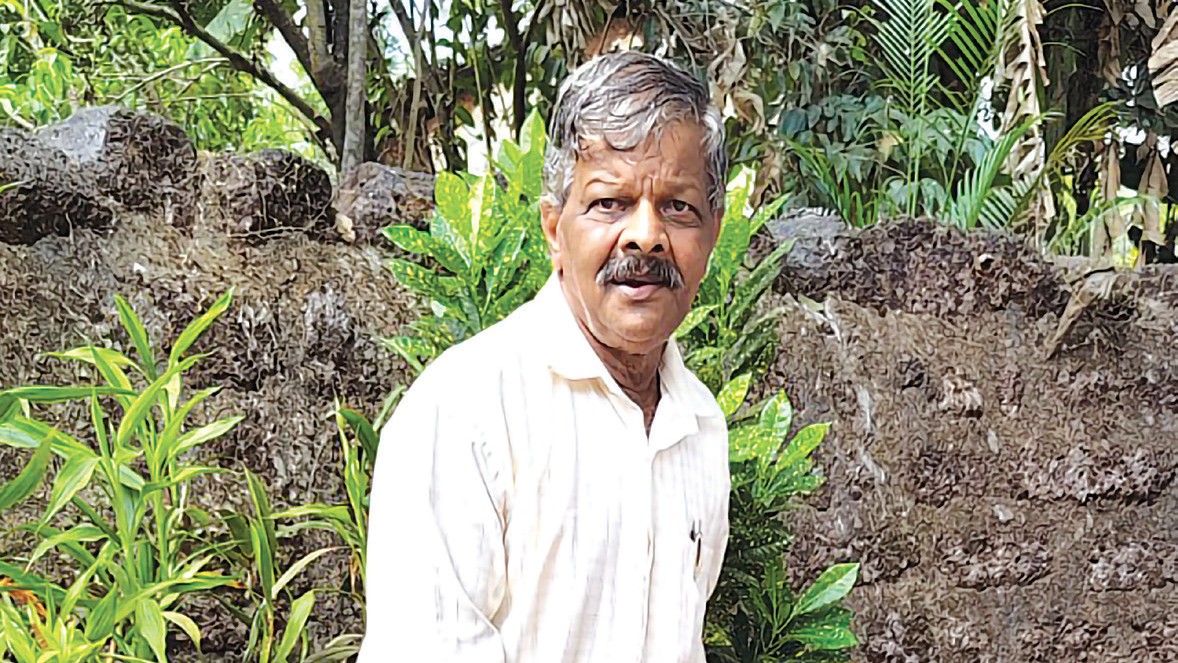

JENIFER FERNANDES
joseph@herald-goa.com
ALDONA: Shyamsundar Krishna Harmalkar, a beloved resident of Santarxette, Aldona, has dedicated over 50 years to traditional carpentry, specialising in house repairs and wooden furniture restoration – all while still using manual tools. With no formal training, Harmalkar learned the craft under the guidance of his uncle, spending three years as an unpaid apprentice before mastering the trade.
Recalling his early days, Harmalkar explained how people once bought logs and soaked them in rivers for months to ensure durability. This method produced wood that could last for decades, unlike today’s practice of cutting and using logs immediately, which drastically reduces their lifespan. Harmalkar emphasised that trees should only be cut when fully matured to ensure strength and longevity.
In his long career, Harmalkar has witnessed a shift away from traditional wooden roofs, known as tizzor, to metal sheets and cement slabs. He attributed this change to rising timber costs and reduced availability.
Despite the trend, he continues to advocate for regular maintenance of wooden structures, stressing that neglect often leads to severe termite infestations and costly repairs. Harmalkar, who is one of the few carpenters specialising in crafting and repairing wooden A-frame roofs seen in most colonial houses, advises homeowners to conduct maintenance every five years to extend the lifespan of their wooden roofs and structures.
Reflecting on his early earnings, Harmalkar recalled receiving just Rs. 2 for his work when he started out, with subsequent increments of 50 paise. Despite meagre wages, he supported his family, as the cost of living was much lower then. “With 25 paise, I could manage an entire day’s shopping,” he said, highlighting the stark contrast with today’s economic realities.
Despite his advancing years, Harmalkar continues to work, often climbing rooftops in the sun to complete repair jobs. He takes pride in his craftsmanship, earning praise from his community for his dedication. However, he lamented the decline of traditional carpentry skills among Goans. Most of his apprentices have been migrants, and few locals are willing to pursue the trade.
Harmalkar has passed down his skills to his children, though they show less enthusiasm for the work. “They complain about the heat, yet they’ll play cricket under the same sun,” he remarked. He warned that without renewed interest from local youth, carpentry in Goa may soon be dominated by migrant workers, posing a threat to the region’s cultural heritage.
Harmalkar also expressed concern about modern carpenters relying heavily on electric tools, noting that his own work is still performed using traditional hand tools. Despite these changes, he remains committed to his craft, proudly sharing that he has never needed a doctor’s visit and remains healthy and content with his work.
As the number of traditional carpenters dwindles, Harmalkar believes preserving these skills is vital to maintaining Goa’s architectural heritage. He urges the younger generation to consider carpentry not just as a profession, but as a way of keeping Goan traditions alive.